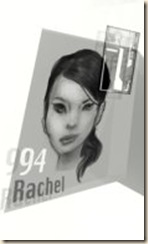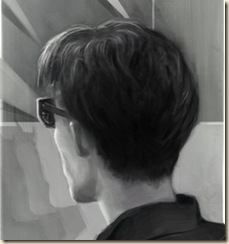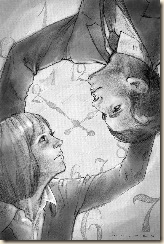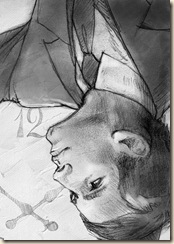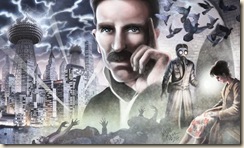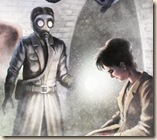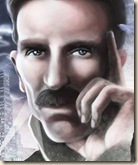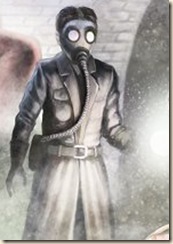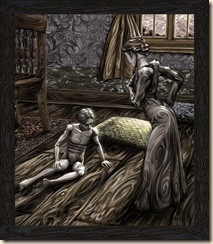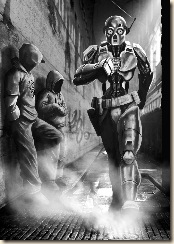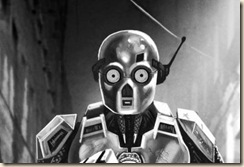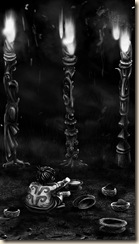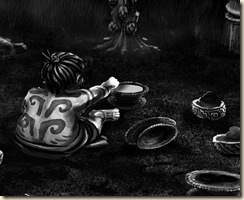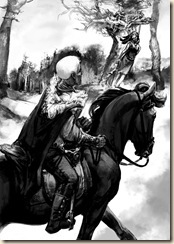
"Will the government make these Indians go west?"
"Yes," Pa said. "When white settlers come into a country, the Indians have to move on. The government is going to move these Indians farther west, any time now. That's why we're here, Laura. White people are going to settle all this country, and we get the best land because we get here first and take our pick. Now do you understand?"
"Yes, Pa," Laura said. "But, Pa, I thought this was Indian Territory. Won't it make the Indians mad to have to--"
"No more questions, Laura," Pa said, firmly. "Go to sleep."
--Laura Ingalls Wilder, Little House on the Prairie
I loved the Little House books as a kid.
I was never particularly into the TV show (I was a literary purist: if Michael Landon wanted to play Pa, he needed to grow a beard, as far as I was concerned) but I read and re-read the books. I played pioneers in the back yard with friends, fantasized about having an attic with pumpkins for chairs, and coveted the prairie-style dresses some of my classmates had (even though I mostly refused to wear dresses; costuming was a whole different matter).
Then I had kids of my own, started acquiring a book collection filled with the classics of my childhood, and re-read them.
These books are a whole different experience when you read them as an adult. The parents are shockingly dysfunctional: Ma openly favors Mary, and Pa openly favors Laura. During one of their moves, Laura and her cousin go to pick up laundry from a laundress who tells them that her thirteen-year-old daughter has just gotten married. (To be fair, Laura is also shocked by this.) When Laura is fifteen, she's sent to live with an unhinged and homicidal woman while teaching school to kids almost as old as she is; she rides home with Almanzo on those long, cold winter rides (on one of which she nearly freezes to death) because she's in literal fear for her life.
And then there's Little House on the Prairie. Pretty much the entire book of Little House on the Prairie.
Pa moves into Indian Country -- knowingly and deliberately. This is land he's not supposed to settle on because it belongs to other people. He builds his house next to "some old trail" (which turns out to be a heavily used Osage trail -- who ever could have predicted such a shocking outcome?) I had remembered the scene where Indians come into Laura's house, but re-reading it as an adult, I picked up on a detail I had missed as a child: "The Indians' ribs made little ridges up their bare sides." She is describing men who are starving to death, and in fact, the Indians came in to demand that Caroline cook them some cornbread. They eat it, take Pa's tobacco, and leave without further incident. Why were these men so hungry? Because their uninvited neighbors were burning their fields in an attempt to intimidate them into leaving their land.
Not long after I re-read the books, I stumbled across a website called Oyate.com that critiques portrayals of Native Americans in children's literature. At the time, they had some very specific critiques of a number of different books, including Little House on the Prairie. They also discussed the problems with "captivity novels" (which I'd also loved as a kid -- these are the books where a white kid, usually a girl, is kidnapped and held hostage by an Indian tribe for months or years).
There are all sorts of other ways to get it wrong: there are also the books where the Indians are the mysterious and stoic dispensers of wisdom -- Yoda with a feathered head-dress. There's also the story where the hapless local tribes are in danger and are saved by the timely intervention of the (white) protagonist. (Both Caddie Woodlawn and one of the Great Brain books use that plotline.)
I pondered this for a bit, then set it aside. Until 2009.
The *plan* is for it to be a settling the frontier book, only without Indians (because I really hate both the older Indians-as-savages viewpoint that was common in that sort of book, *and* the modern Indians-as-gentle-ecologists viewpoint that seems to be so popular lately, and this seems the best way of eliminating the problem, plus it'll let me play with all sorts of cool megafauna).
--Patricia C. Wrede, while working on The Thirteenth Child
In 2009, The Thirteenth Child came out to mostly positive reviews...and a whole bunch of controversy. Wrede tried to avoid all the various bad options by removing Native Americans from the equation entirely, and writing about an American continent without them. Given the generations of effort white people put into removing Native Americans from the continent, this was seen by many people as a problematic solution, at best, to the question of how to write about the frontier.
This started me thinking, again, about all the wrong ways to do it. The problem is that the process of colonizing the Americas was ugly. Stunningly, shockingly ugly. Horrifying even by the standards of the day: "I fought through the War Between the States," wrote a Georgia soldier who participated in the Cherokee Trail of Tears, "and have seen many men shot, but the Cherokee Removal was the cruelest work I ever knew." Whitewashing this history is profoundly dishonest. Pretending that the Native Americans were the bad guys is profoundly dishonest. How do you write about the frontier from the white perspective while acknowledging the basic horror of what white people did?
WHAT THESE PEOPLE NEED IS A HONKY
Tom Cruise is the Last Samurai. Kevin Costner wins the heart of American Indians with his wolf dancing. Orlando Bloom, in Kingdom of Heaven, goes from medieval England to Jerusalem to teach the Arabs how to sink wells and transport water. Is there anything that can be done about this plague of Orientalist white-guy Mary Sue-ism?
--Panel description at WisCon, 2007
MIGHTY WHITEY
Mighty Whitey is usually a displaced white European, of noble descent, who ends up living with native tribespeople and not only learns their ways but also becomes their greatest warrior/leader/representative. Extra points if he woos The Chief's Daughter along the way.
--TVTropes.com
One popular option is the story about the lone white person who Gets It and throws in his or her lot with the Lakota or the Na'vi (and, quite often, because the most perfect Lakota / Na'vi ever, much like the prototypical Mary Sue can out-logic Spock, out-snark McCoy, and get seduced by Kirk, all before lunch.)
These stories give white readers and viewers a comfortable window on the past. Because like the protagonists of these stories, most of us would like to believe that we would have been among the minority who did the right thing. We would like to believe that we never would have been slaveholders -- we would have run a stop on the Underground Railroad. We would like to believe that we'd never have turned a blind eye to the Nazi death camps -- we'd have invited our Jewish neighbors to hide in our attic. We would certainly like to believe that we would have protested the Indian Removal Act.
But even if we had, the vast majority of people around us would have made the other choice.
So what would a story about those people look like?
(Of course, I probably did it wrong, too. But hopefully I at least did it wrong in a different way.)
--Naomi Kritzer
![]()

